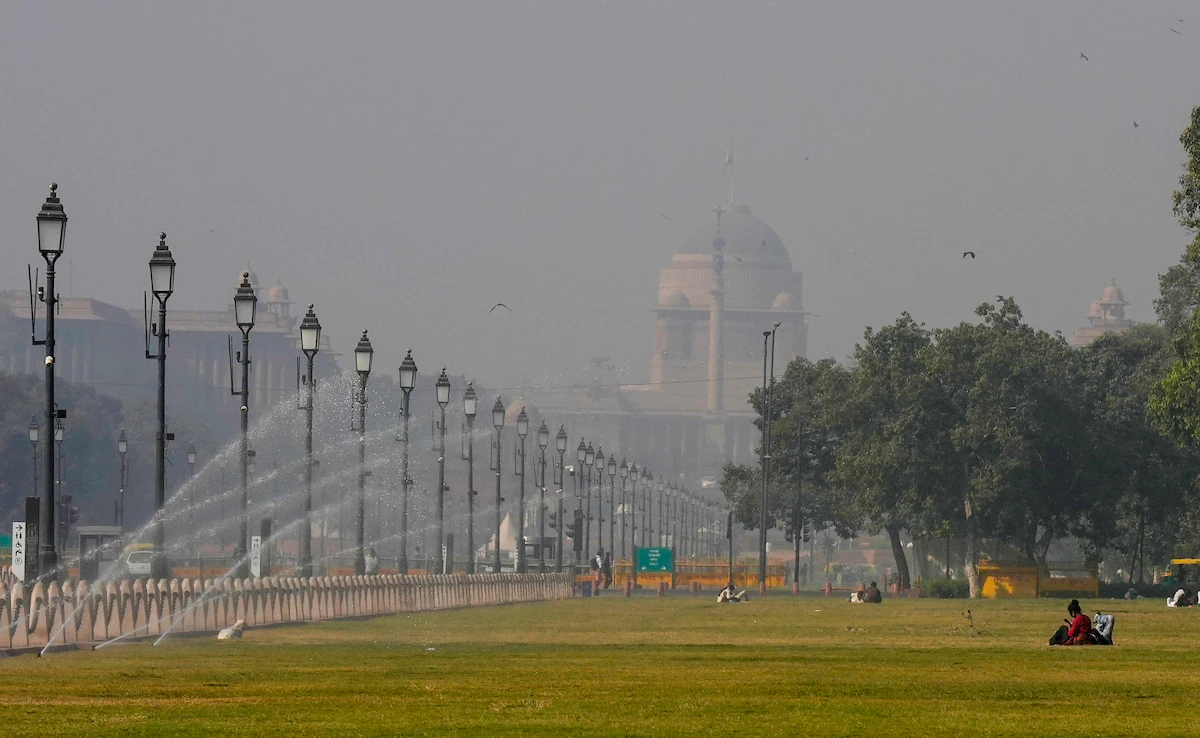- Courses
- GS Full Course 1 Year
- GS Full Course 2 Year
- GS Full Course 3 Year
- GS Full Course Till Selection
- Answer Alpha: Mains 2025 Mentorship
- MEP (Mains Enrichment Programme) Data, Facts
- Essay Target – 150+ Marks
- Online Program
- GS Recorded Course
- NCERT- First Ladder
- Polity
- Geography
- Economy
- Ancient, Medieval and Art & Culture AMAC
- Modern India, Post Independence & World History
- Environment
- Governance
- Science & Technology
- International Relations and Internal Security
- Disaster Management
- Ethics
- Current Affairs
- Indian Society and Social Issue
- CSAT
- 5 LAYERED ARJUNA Mentorship
- Public Administration Optional
- ABOUT US
- OUR TOPPERS
- TEST SERIES
- FREE STUDY MATERIAL
- VIDEOS
- CONTACT US
STRENGTHENING INDIAN JUDICIARY
STRENGTHENING INDIAN JUDICIARY

Latest Context
To maintain the rule of law and provide justice for all citizens, the Indian judiciary is essential. The Indian judicial system is still hampered by a number of loopholes, despite recent technological developments.
Major Loopholes in the Judiciary in India
Large Pendencies of Cases:
- There is a significant backlog of cases in India's courts, which makes it difficult to administer justice quickly. A lack of judges and ineffective case management procedures are the main causes of this backlog.
- Over 4.7 crore cases were still pending in courts at all levels of the judiciary system as of May 2022. The shortcomings of the judicial system are shown by the fact that this number keeps increasing.
Insufficient Digital and Physical Infrastructure:
- Various courts around the country struggle with a lack of courtrooms, restricted access to essential amenities like bathrooms, waiting areas, and parking spots, which is inconvenient for litigants, attorneys, and court employees and causes crowding and delays in processes.
- The Covid-19 pandemic has brought to light the importance of having a digital infrastructure for doing virtual hearings and maintaining the flow of justice.
- Only 9 of India's 25 High Courts have adopted live broadcasting of courtroom events. Live broadcasting is only available for Constitutional matters at the Supreme Court itself.
- Certain cases, including divorce disputes, child adoption, sexual crimes, child sexual abuse, and juveniles in trouble with the law, are not permitted to be live streamed or recorded under the Model Rules for Live Streaming and Recording of Court Proceedings.
Limited Use of Alternative Dispute Resolution (ADR):
- ADR mechanism like arbitration and mediation can reduce the load on the courts. Their use is still mostly limited in India.
Recruitment Delays:
- It takes longer than required to fill judicial positions. There are just 21 judges per million people in the nation of 135 million (as of February 2023).
- The high court’s now have 400 vacancies. Additionally, the lower judiciary has vacancies in about 35% of the positions.
Inequality of Representation:
- The composition of the higher court, where women are underrepresented, is another issue of concern. Only 15% of the 1.7 million registered advocates are women.
- Less than 11.5 percent of judges in high courts are female.
- Only three women are serving as judges on the Supreme Court at the present.
- For 36 days in 2027, Justice B V Nagarathna will serve as India's Chief Justice.
What steps may India take to strengthen and empower its judicial system?
Strengthening E-Court System:
- A strong e-court system must be put in place in order to increase efficiency, expedite court procedures, and eliminate paperwork. Digitalizing case files, allowing online case filing, e-summons, e-payment, and video conferencing for hearings are a few of the things that fall under this category.
- For the beginning of the third phase of the e-Courts project, the Union Budget 2023–24 allotted Rs 7,000 crore.
- Creating infrastructure for the judiciary is another goal of the Department of Justice's Centrally Sponsored Scheme (CSS).
- The CSS increases state government funding for the construction of courthouses, computer labs, attorneys' lounges, lavatory facilities and housing for judicial personnel.
- The ratio of funds allocated to each state is 60:40 (Centre:State), 90:10 for the eight North-Eastern and two Himalayan States, and 100% for the Union Territories.
- N.V. Ramana, a former chief justice of India, proposed creating the National Judicial Infrastructure Authority of India (NJIAI) to set up a sufficient infrastructure for courts.
Transforming the Appointment System:
- Vacancies must be filled very once, and a suitable timetable for the appointment of judges must be established. Additionally, ideas must be given in advance.
- The All-India Judicial Services (AIJS) is a crucial component that may certainly help India create a stronger judicial system.
Case Management Software:
- It is essential to create and implement case management software that may be used to monitor case development, automate administrative procedures, and improve communication between judges, attorneys, and court personnel. It might make the legal system more effective overall.
Data Analytics and Case Prediction:
- India may use data analytics and artificial intelligence to assess previous rulings and forecast case outcomes to help judges make more informed choices, reduce discrepancies, and enhance the quality of rulings.
Public Legal Education:
- Public legal education and awareness campaigns are required to encourage out-of-court settlements and reduce needless litigation by educating the public about their rights and duties.
Citizen Feedback Mechanism:
- It is necessary to set up a structure for public input on the legal system, as court experiences can point out problems and provide areas for improvement.

Prelims
Q. Consider the following statements: (2019)
1.The 44th Amendment to the Constitution of India introduced an article placing the election of the Prime Minister beyond judicial review.
2.The Supreme Court of India struck down the 99th Amendment to the Constitution of India as being violative of the independence of judiciary.
Which of the statements given above is/are correct?
(a) 1 only
(b) 2 only
(c) Both 1 and 2
(d) Neither 1 nor 2
Ans: (b)
Mains
Q. Critically examine the Supreme Court’s judgement on ‘National Judicial Appointments Commission Act, 2014’ with reference to the appointment of judges of higher judiciary in India. (150 words)
Must Check: Best IAS Coaching Centre In Delhi



